 NÚI HOA SƠN(Huashan) - TỈNH THIỂM TÂY - TRUNG QUỐC:Hoa Sơn là một ngọn núi thuộc đoạn đông dãy Tần Lĩnh ở phía nam tỉnh Thiểm Tây, cách thành phố Tây An khoảng 100 km về phía đông. Hoa Sơn có năm đỉnh núi chính, trong đó đỉnh cao nhất Nam Phong (ở phía nam) có tên Lạc Nhạn ("落雁") cao 2.154,9 m. Ngọn núi bao bọc bởi toàn đá hoa cương, từ xa vọng về, hình núi dựng đứng như một bông hoa và vì vậy mà có tên là Hoa Sơn, đỉnh chính cao 2.083m, gọi là Thái Hoa Sơn hoặc Tây Nhạc. Hoa Sơn nổi danh là nơi hiểm nguy, thử thách tài nghệ của những dũng sĩ leo núi.
NÚI HOA SƠN(Huashan) - TỈNH THIỂM TÂY - TRUNG QUỐC:Hoa Sơn là một ngọn núi thuộc đoạn đông dãy Tần Lĩnh ở phía nam tỉnh Thiểm Tây, cách thành phố Tây An khoảng 100 km về phía đông. Hoa Sơn có năm đỉnh núi chính, trong đó đỉnh cao nhất Nam Phong (ở phía nam) có tên Lạc Nhạn ("落雁") cao 2.154,9 m. Ngọn núi bao bọc bởi toàn đá hoa cương, từ xa vọng về, hình núi dựng đứng như một bông hoa và vì vậy mà có tên là Hoa Sơn, đỉnh chính cao 2.083m, gọi là Thái Hoa Sơn hoặc Tây Nhạc. Hoa Sơn nổi danh là nơi hiểm nguy, thử thách tài nghệ của những dũng sĩ leo núi. |
| Đây là một trong những hành trình du lịch nguy hiểm nhất trên thế giới. Du khách đến với núi Hoa Sơn (Huashan) ở Trung Quốc có dịp thử thách lòng dũng cảm khi vượt qua những con đường nhỏ đóng bằng ván gỗ cheo leo trên độ cao hơn 2.000 mét. Ảnh: News. |
 SGTT.VN - Trên thế gian này có những ngọn núi lừng danh không vì độ cao tuyệt đối mà vì huyền thoại của nó, và với những ai yêu tiểu thuyết Kim Dung chắc hẳn mơ ước một lần đến núi Hoa Sơn để nghe chuyện “thiên hạ ngũ tuyệt” luận kiếm tranh tài cao thấp...
SGTT.VN - Trên thế gian này có những ngọn núi lừng danh không vì độ cao tuyệt đối mà vì huyền thoại của nó, và với những ai yêu tiểu thuyết Kim Dung chắc hẳn mơ ước một lần đến núi Hoa Sơn để nghe chuyện “thiên hạ ngũ tuyệt” luận kiếm tranh tài cao thấp...Không biết ngày xưa khi Đông tà Hoàng Dược Sư đảo chủ đảo Đào Hoa hay bang chủ cái bang Bắc cái Hồng Thất Công tham ăn tham rượu đến Hoa Sơn được chào đón nồng nhiệt ra sao, nhưng có lẽ kẻ hậu thế hôm nay luôn được hưởng niềm ưu ái với kèn trống quân nhạc, mấy chục mỹ nhân chân dài của thành Tây An nghênh tiếp như đón chào chàng “Thần điêu đại hiệp” đến tranh ngôi “Võ lâm ngũ bá” miền Hoa Âm xa xôi này. Hàng năm có đến hàng triệu người chen chân tìm đến ngọn núi cách cổ thành Tây An của tỉnh Thiểm Tây 120 cây số này để mộng mơ rằng mình sẽ là người được trao “Cửu âm chân kinh”. Và hôm nay, một hiệp khách Nam Hán, mặt xanh như tàu lá, mắt mang kính cận, ốm như cây sậy đã “bất chiến tự nhiên thành”. “Cửu âm chân kinh” ngày xưa đã được thay bằng món quà thưởng là thanh kiếm “Hoa Sơn luận kiếm” bằng inox và tấm vé thưởng một năm đi cáp treo lên Hoa Sơn miễn phí!
Đường lên chốn tranh tài cao thấp của giới võ lâm thiên hạ ngày nay chen kín các sắc màu trang phục Âu Á, váy ngắn váy dài và tuyệt chiêu hơn khi giới võ lâm thời hiện đại đang rồng rắn chui vào cáp treo để chinh phục đỉnh Bắc Phong cao 1.615m chỉ trong tích tắc. Ngày xưa Quách Tĩnh cần tới 300 chiêu mới dám mơ Thiên hạ ngũ tuyệt thì nay giang hồ hiện đại chỉ cần 20 nhân dân tệ là có thể mơ giấc càn khôn.
Người Trung Hoa xưa nay có câu cửa miệng “chưa đến ngũ nhạc là chưa từng biết núi”. Năm ngọn núi huyền thoại tiêu biểu là Thái Sơn – Đông nhạc ở miền Sơn Đông, Hành Sơn – Nam nhạc của tỉnh Hồ Nam, Tung Sơn – Trung nhạc của miền Thiếu Lâm Tự Hà Nam, Hằng Sơn – Bắc nhạc của vùng Hà Bắc, và Hoa Sơn – Tây nhạc đây chính là một trong năm ngọn núi lừng danh đất Trung Nguyên xưa nay. Và xem ra hôm nay tôi mới được cơ hội biết đến núi…
Những môn đệ của “cáp treo chưởng” dừng bước ở mỏm Bắc Phong, từ đây các hiệp khách mới bắt đầu biết đến “ngửa mặt thấy núi”. Gần một nửa bạn đồng môn đã chọn cách xếp hàng chen chân vào chụp ảnh bên phiến đá có khắc chữ “Hoa Sơn luận kiếm Kim Dung đề” của chính tay Kim Dung tiên sinh, hay chọn cách thưởng thức trà đạo ngắm núi để khỏi phải trèo lên đỉnh Trung Phong và Chiêu Dương Đông Phong ở độ cao hơn 2.000m với những dốc núi dựng đứng cực kỳ cheo leo. Một bức ảnh bên phiến đá Hoa Sơn với thanh kiếm gỗ thuê dịch vụ còn giá trị hơn từng bước chân chinh phục độ cao gian nan của đỉnh núi. Bởi hàng triệu người trên trần gian này từng mê mẩn tiểu thuyết kiếm hiệp Kim Dung, chỉ cần kiên nhẫn chờ đợi và chen chúc là chụp được tấm hình nơi phiến đá do đích thân Kim Dung đề…
Khối núi đá hoa cương Tần Lĩnh thật khéo thách thức lòng người với những hẻm núi cao như dựng đứng với một bên vực sâu khó nhìn thấy đáy, và con người cũng khéo tạc vào núi những lối mòn chỉ đủ vừa một người vượt lên để vươn tới đỉnh Nam Phong – chóp núi cao nhất của Hoa Sơn. Và người ta cũng khéo khích tướng người chinh phục với quy định: ai lên được đỉnh Nam Phong cao 2.160,5m sẽ được tặng thưởng một huy chương vàng có lời đề tặng đã chinh phục thành công Hoa Sơn. Người ta thường nói núi được tạo nên không để ngăn cách mà để con người dũng khí vượt qua.
Và trên đường lên đỉnh Nam Phong, tôi lại diện kiến những câu chuyện tình yêu bất tử. Khắp các lối đường mòn dẫn lên đỉnh Hoa Sơn, đâu đâu tôi cũng thấy những đoạn dây cáp căng bên vực sâu với một màu đỏ rực của những mảnh vải cột vào những chiếc ổ khóa được khắc tên đôi trai gái và những lời hẹn ước chung tình đến trọn đời. Đôi uyên ương sẽ khắc tên mình, ngày giờ hẹn ước vào hai chiếc ổ khóa, đính vào một chiếc băng đỏ, khóa lồng hai ổ vào sợi cáp và cùng ném chìa xuống vực sâu. Nhìn những đôi trai gái tay trong tay xếp hàng trước các điểm dịch vụ bán ổ khóa nơi này mới hay đã có hàng vạn mối tình hẹn ước nơi này và hàng vạn ổ khóa đã được những người thợ cần mẫn ngày đêm khắc tạc tên người, và nay Hoa Sơn lại có thêm một huyền thoại về tình yêu bất tử…
Hoa Sơn là một trong những ngọn núi hiểm trở nhất Trung Hoa. Đường từ Chiêu Dương Đông Phong lên đỉnh Nam Phong đã bao người bỏ cuộc vì những con dốc dựng đứng, mồ hôi ướt đẫm trong tiết trời rét buốt 7oC. Dòng người như thưa dần trên đường lên độ cao tuyệt đối...
Tìm đến Hoa Sơn không chỉ mong ước một lần được đặt chân lên một trong ngũ nhạc đất Trung Nguyên, mà tôi còn mong tìm một con người biểu tượng cho hình bóng đại hiệp ngày nay.
Nhiều người cho biết, giữ kỷ lục chinh phục Hoa Sơn là một người đàn ông tật nguyền hơn 50 tuổi, với hơn 3.000 lần chinh phục đỉnh Hoa Sơn. Kỷ lục này được tạo nên không vì sự thách đấu hay sĩ diện người quân tử, mà chính là miếng cơm manh áo và lòng hiếu thảo của con người này. Càng khâm phục hơn khi biết mỗi chuyến leo Hoa Sơn, ông He phải mang đến hơn 60kg hàng cho những người buôn bán trên đỉnh núi.
Người ta kể, sau khi vợ qua đời vì bạo bệnh, ông He một mình nuôi hai con ăn học và cha mẹ già đau ốm, cái nghèo khó như một định mệnh gắn chặt đời ông He khi làm công nhân mỏ than bị tai nạn lao động mất cánh tay trái. Và từ đó, ông đã chọn cái nghề mà không ai dám chọn để mưu sinh: thồ hàng lên đỉnh Hoa Sơn.
Những cư dân của Hoa Sơn hôm nay nói rằng, nếu có cuộc “Hoa Sơn luận kiếm” lần thứ tư, chắc hẳn không cần phải thi thố võ nghệ, tài năng mà mọi người sẽ bầu chọn ông He làm người vô địch, bởi không chỉ nghị lực vượt núi, vượt qua nghịch cảnh bản thân, ông He còn là biểu tượng của lòng hiếu thảo vô biên. Những đồng tiền ông kiếm được trong cuộc mưu sinh gian khó này, phần lớn ông đều dành để lo thang thuốc cho cha mẹ già. Với ông, không ngọn núi nào có thể cao hơn đỉnh Thái Sơn với ơn nghĩa sinh thành.
Tôi không có cơ hội gặp được ông He trong chuyến chinh phục Hoa Sơn lần này, nhưng câu chuyện về ông đã là một huyền thoại vượt lên trên mọi huyền thoại của Hoa Sơn lừng danh…
















































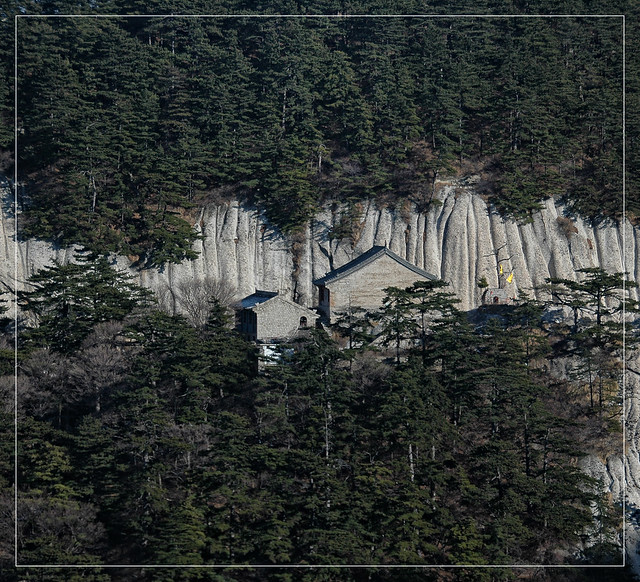 Huashan: Sacred Mountains of the first mountain
Huashan: Sacred Mountains of the first mountainXifeng Huashan Mountain (Huashan Mountain) is famous as one of the five mountains, elevation of 2154.9 meters, ranking first in five mountains, located in Xi’an, Shaanxi Province, 120 kilometers east of history and culture of old haunt Huayin County, Weinan City, north of the Weihe Plain and magnanimous roar of the Yellow River, south Qinling is a watershed ridge north of the Qinling offshoot of a granite mountain. With the situation changing nature of the dress, Huashan’s Zi Wan-state has been sound and color of the sketched out is a state-level scenic spots.
 Huashan is not only majestic odd insurance, and the mountain steep, steeply Chihiro, peaks of tall and graceful, with dangerous powers in the world, since ancient times, “Huashan dangerous world,” “strange insurance best in the world mountain,” was precisely because of this, Mountain has been many years attracted countless brave. Qi insurance can stimulate people’s courage and wisdom, without fear of danger in the spirit of climbing, and immersive experience to the magnificent mountains of the motherland.
Huashan is not only majestic odd insurance, and the mountain steep, steeply Chihiro, peaks of tall and graceful, with dangerous powers in the world, since ancient times, “Huashan dangerous world,” “strange insurance best in the world mountain,” was precisely because of this, Mountain has been many years attracted countless brave. Qi insurance can stimulate people’s courage and wisdom, without fear of danger in the spirit of climbing, and immersive experience to the magnificent mountains of the motherland.
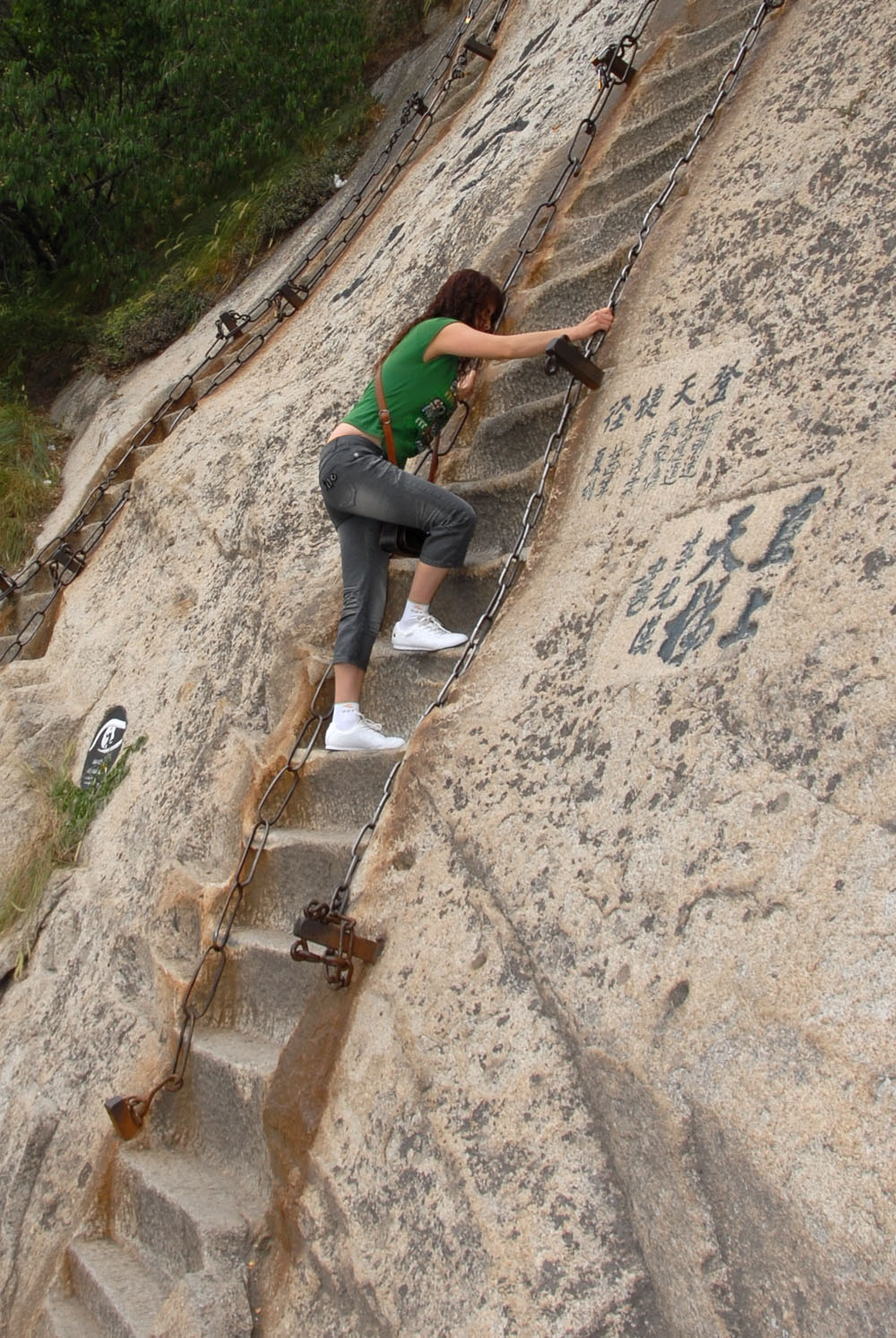

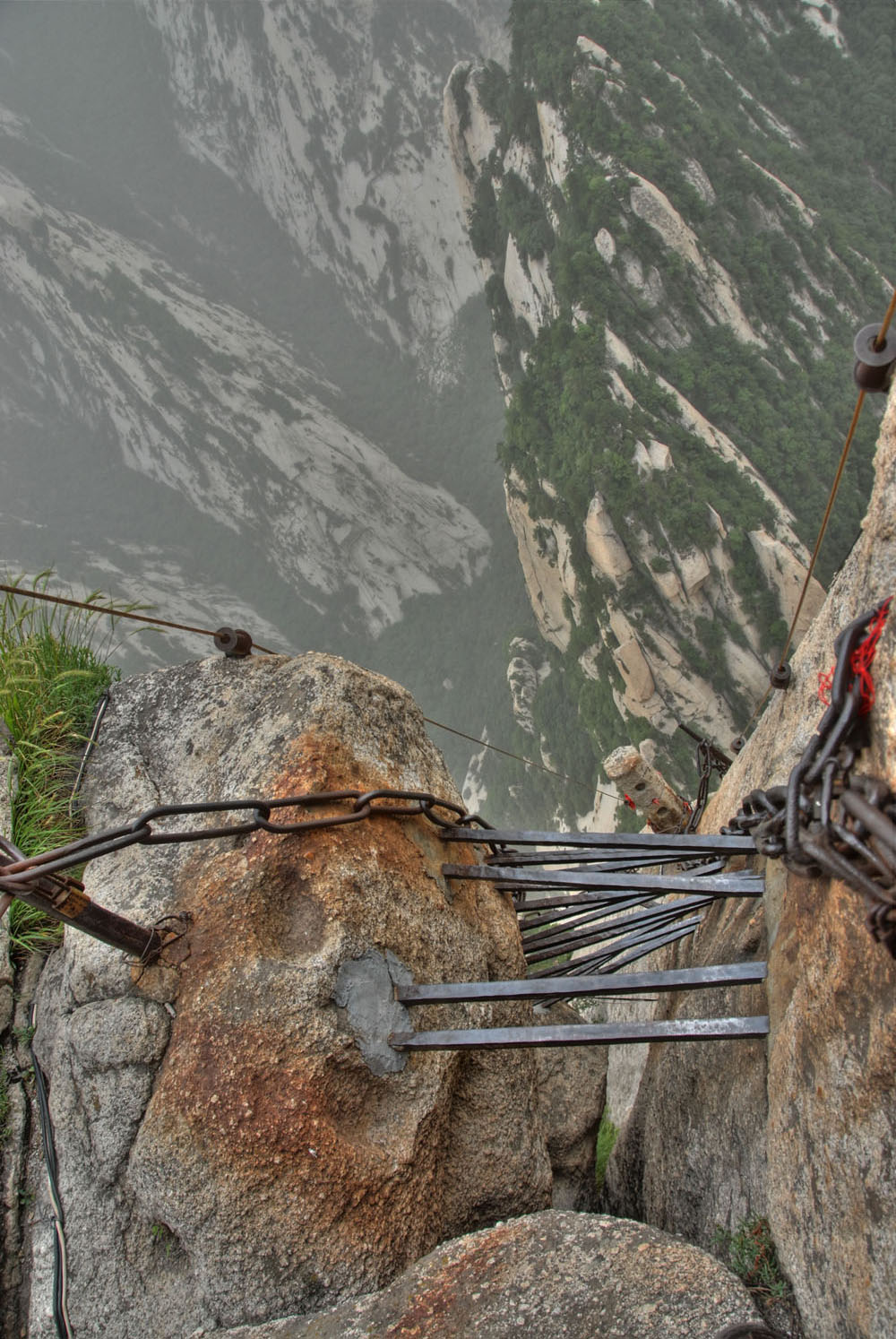
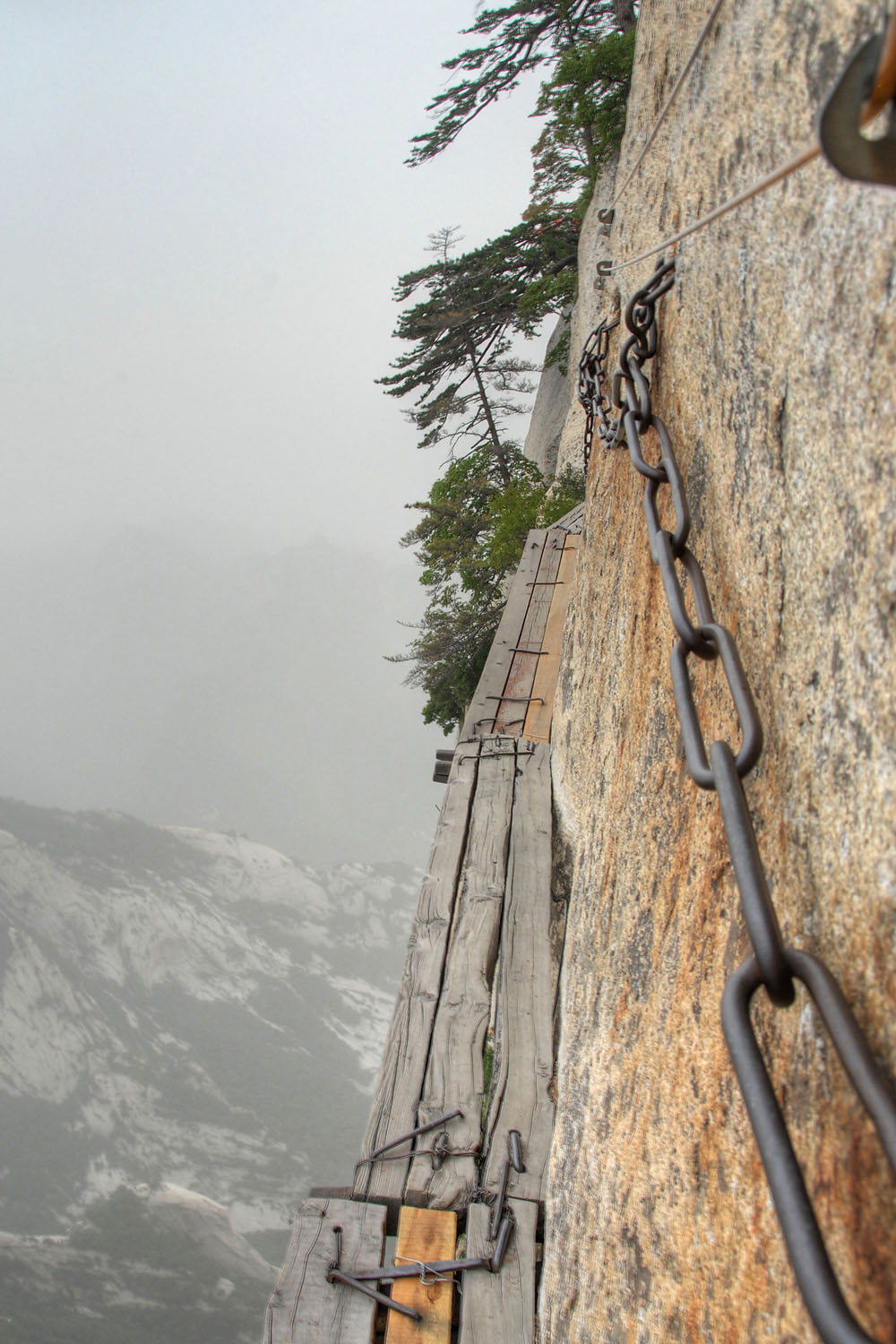
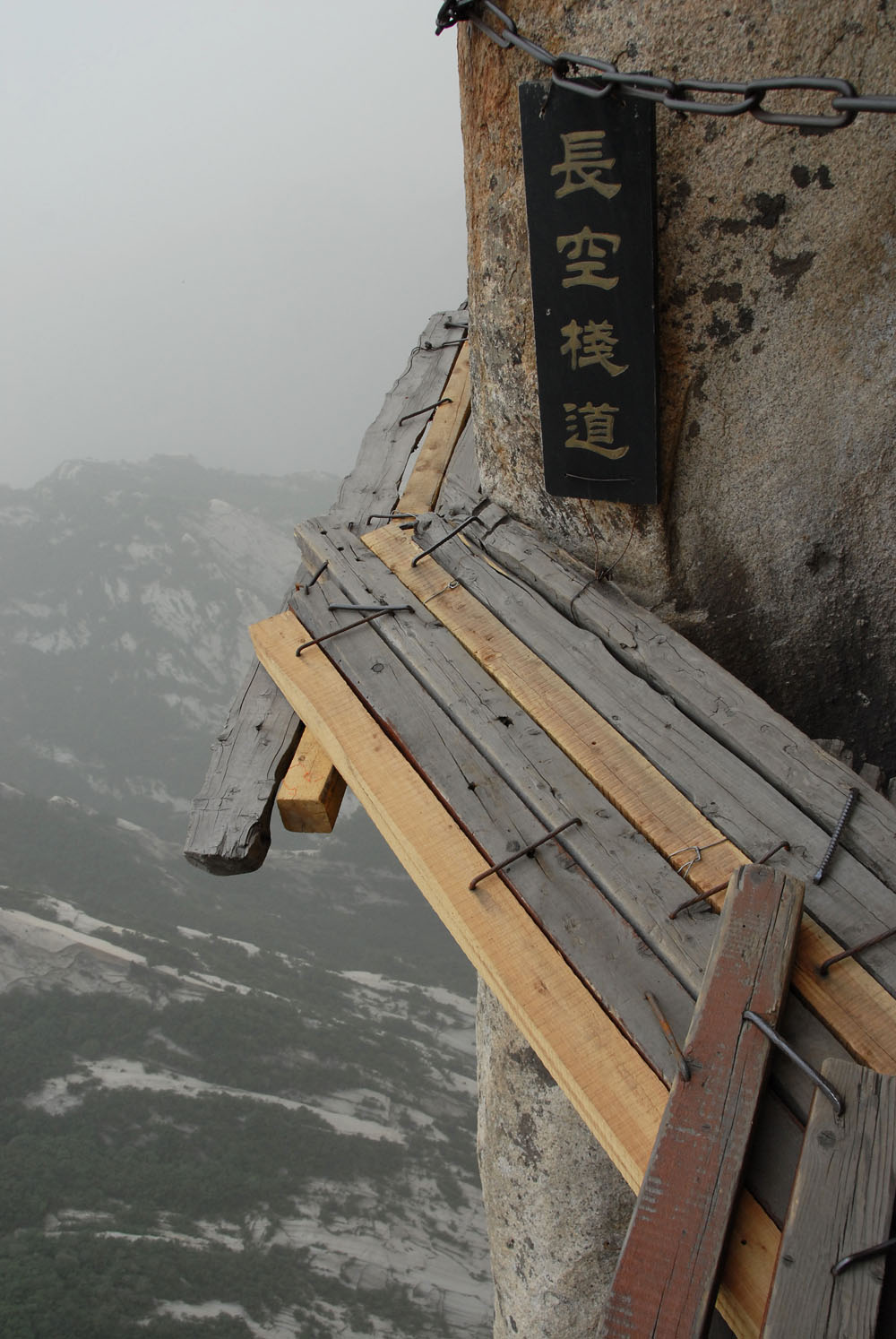
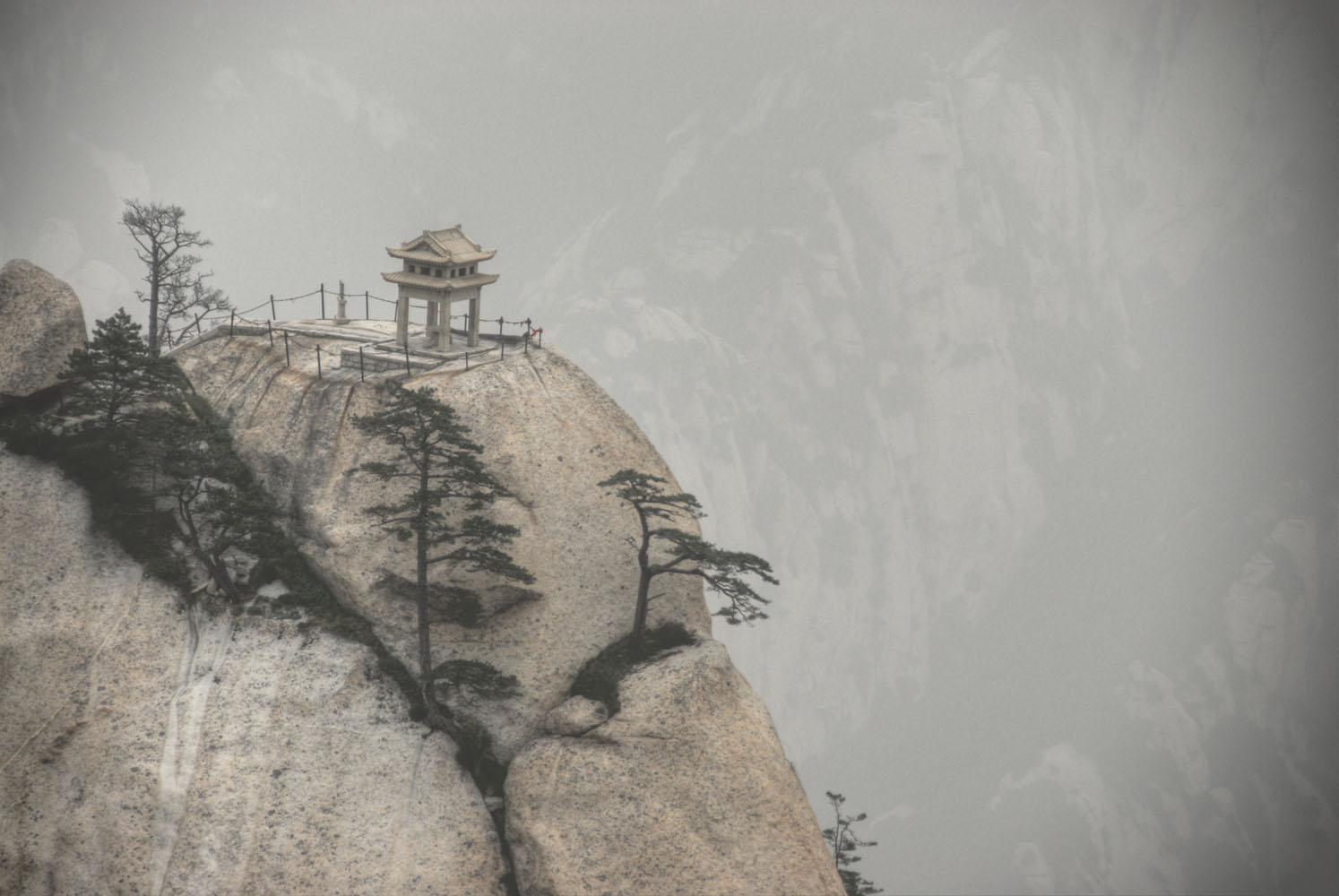 China’s ancient books have long been documented on the Mountain. Huashan first described in ancient books, said to be “Book of Yugong” articles, but the initial Huashan is called “Tun objects Mountain”, Huashan is known as Nishioka and Dong Yue Tai also said that first appeared in “Erya interpretation Mountain,” a book . Nishioka This title is said to be a result of King Ping of Zhou Qiandouluoyang, Huashan in the Eastern Zhou Dynasty capital of the West, so called “Nishioka.” After its capital in Xianyang Qin Dynasty, Western Han dynasty, its capital Chang’an, are in Mountain west, so Huashan is no longer referred to as “Nishioka.” Until the Han emperor Guangwu Liu has established the Eastern Han Dynasty in Luoyang regime, Huashan resumed on the “Nishioka,” said, and has been in use ever since. Han Ban Gu wrote, “Bai Hu Tong Yi,” said: “Nishioka for the Mountain who was also China’s for the words. Introduction things Sheng-hua, Gu Yue Hua Shan.” Namely “China” with “was.” To the spring flowers are in full bloom, beautiful scenery, and thus Nishioka called the Mountain.
China’s ancient books have long been documented on the Mountain. Huashan first described in ancient books, said to be “Book of Yugong” articles, but the initial Huashan is called “Tun objects Mountain”, Huashan is known as Nishioka and Dong Yue Tai also said that first appeared in “Erya interpretation Mountain,” a book . Nishioka This title is said to be a result of King Ping of Zhou Qiandouluoyang, Huashan in the Eastern Zhou Dynasty capital of the West, so called “Nishioka.” After its capital in Xianyang Qin Dynasty, Western Han dynasty, its capital Chang’an, are in Mountain west, so Huashan is no longer referred to as “Nishioka.” Until the Han emperor Guangwu Liu has established the Eastern Han Dynasty in Luoyang regime, Huashan resumed on the “Nishioka,” said, and has been in use ever since. Han Ban Gu wrote, “Bai Hu Tong Yi,” said: “Nishioka for the Mountain who was also China’s for the words. Introduction things Sheng-hua, Gu Yue Hua Shan.” Namely “China” with “was.” To the spring flowers are in full bloom, beautiful scenery, and thus Nishioka called the Mountain. Huashan is too dangerous because so few people to board before the Tang Dynasty.”Book of History” contains, Huashan is “Emperor Xuan Yuan will Qunxian of the country.” “Historical Records” is contained, the Yellow Emperor, Yushun have gone to the Huashan Xunshou. According to records, when the fate craftsmen Qinzhao Wang Shi hook ladder climbing Mountain ride. Wei, Jin and Northern and Southern Dynasties, there was no road leading to Mountain peak. Until the Tang dynasty, with the rise of Taoism, Taoism believers began to Iyama concept gradually built along the northern slope of the valley and on the Road to carve out a dangerous form of “Since ancient times, Huashan a road.”
Huashan is too dangerous because so few people to board before the Tang Dynasty.”Book of History” contains, Huashan is “Emperor Xuan Yuan will Qunxian of the country.” “Historical Records” is contained, the Yellow Emperor, Yushun have gone to the Huashan Xunshou. According to records, when the fate craftsmen Qinzhao Wang Shi hook ladder climbing Mountain ride. Wei, Jin and Northern and Southern Dynasties, there was no road leading to Mountain peak. Until the Tang dynasty, with the rise of Taoism, Taoism believers began to Iyama concept gradually built along the northern slope of the valley and on the Road to carve out a dangerous form of “Since ancient times, Huashan a road.” Huashan its steep attracted countless visitors. View of the mountains, homes, Pavilion, Pavilion, built Jie Yi mountains, mountain flying Zhi, looking like castles in the air, and the old pines form a contrast is even more distinctive. Mountain beauty, but also the image of different, such as might Han Xiangzi cattle drive, toad opera turtles, white snake in distress … …. Valley Road, gurgling water, streams of water curtain falls even more fun. And Huashan also its towering stand upright in the Weihe Plain. East, south and west Sanfeng stand, knife cut on one. Joe Chang Tang poet, wrote in his poem: “Who according to Sky Sword, cutting out the peaks pointing to the sky.” Are aimed at the mountain’s tall and straight, such as cutting purposes. Under the same into the foothills of the Weihe Plain, Huashan is only 330-400 meters above sea level, while the Mountain elevation of 2154.9 meters, height difference of more than 1.7 thousand meters, towering mountains, is obviously more upright.
Huashan its steep attracted countless visitors. View of the mountains, homes, Pavilion, Pavilion, built Jie Yi mountains, mountain flying Zhi, looking like castles in the air, and the old pines form a contrast is even more distinctive. Mountain beauty, but also the image of different, such as might Han Xiangzi cattle drive, toad opera turtles, white snake in distress … …. Valley Road, gurgling water, streams of water curtain falls even more fun. And Huashan also its towering stand upright in the Weihe Plain. East, south and west Sanfeng stand, knife cut on one. Joe Chang Tang poet, wrote in his poem: “Who according to Sky Sword, cutting out the peaks pointing to the sky.” Are aimed at the mountain’s tall and straight, such as cutting purposes. Under the same into the foothills of the Weihe Plain, Huashan is only 330-400 meters above sea level, while the Mountain elevation of 2154.9 meters, height difference of more than 1.7 thousand meters, towering mountains, is obviously more upright. Huashan the source of the name are many explanations, in general, like a lotus with the Huashan mountain is inseparable from the ancient times, “China” and “flower” universal, as “Waterways,” said: well, if the look of the flower -like “, hence the name. one of China’s Five Sacred Mountains, Shaanxi Province, famous. is located in Huayin County, an eastern Qinling. east Tongguan, Review Of the south Qinling, north Huang Wei, the old name was too Huashan, also known as Xiyue Huashan . Central (beautiful woman), East (Chaoyang), West (Lotus), South (Harmony between), North (5-yun) composed of five peaks. Yuanwang peak shaped like a gold ingot, and surrounded by several hills afar the shape of lotus Dutch; Xifeng Cuiyun Palace ago that Kau Lotus Petal stone, called “Huashan,” compounded by recent clinical Yellow River is the birthplace of China, one accent so-called “Mountain.” as a whole block of granite mountains, peak elevation 2157.9M . Qifeng steep cliffs overlooking the Weihe Plain, with steeply Chihiro trend, since ancient times as a tourist attraction. Huashan mountain terrain over local climate, landscape rock joints to the concentration of the formation of gullies. ravine accumulation of a huge rock block, the famous “fish stone “namely, Kangxi period (1662 ~ 1722) formed by the outbreak of mud-rock flows. Huashan North Slope large fault is still recent activity, 1556 Love County, to reach the Richter 8 earthquake.
Huashan the source of the name are many explanations, in general, like a lotus with the Huashan mountain is inseparable from the ancient times, “China” and “flower” universal, as “Waterways,” said: well, if the look of the flower -like “, hence the name. one of China’s Five Sacred Mountains, Shaanxi Province, famous. is located in Huayin County, an eastern Qinling. east Tongguan, Review Of the south Qinling, north Huang Wei, the old name was too Huashan, also known as Xiyue Huashan . Central (beautiful woman), East (Chaoyang), West (Lotus), South (Harmony between), North (5-yun) composed of five peaks. Yuanwang peak shaped like a gold ingot, and surrounded by several hills afar the shape of lotus Dutch; Xifeng Cuiyun Palace ago that Kau Lotus Petal stone, called “Huashan,” compounded by recent clinical Yellow River is the birthplace of China, one accent so-called “Mountain.” as a whole block of granite mountains, peak elevation 2157.9M . Qifeng steep cliffs overlooking the Weihe Plain, with steeply Chihiro trend, since ancient times as a tourist attraction. Huashan mountain terrain over local climate, landscape rock joints to the concentration of the formation of gullies. ravine accumulation of a huge rock block, the famous “fish stone “namely, Kangxi period (1662 ~ 1722) formed by the outbreak of mud-rock flows. Huashan North Slope large fault is still recent activity, 1556 Love County, to reach the Richter 8 earthquake.
 Hengshan Mountain, named the Southern Mountain of the Five Sacred Mountains, is located about 120km south of Changsha. It has 72 peaks and extends 150 kilometers, with 800 miles in circumference. The Huiyan Peak is the south end of the peaks, Yuelu Mountain in Changsha City is the north end, and the Zhurong Peak is the highest, with 1,290 meters above sea level.
Hengshan Mountain, named the Southern Mountain of the Five Sacred Mountains, is located about 120km south of Changsha. It has 72 peaks and extends 150 kilometers, with 800 miles in circumference. The Huiyan Peak is the south end of the peaks, Yuelu Mountain in Changsha City is the north end, and the Zhurong Peak is the highest, with 1,290 meters above sea level.As early as 2,000 years ago, many emperors and celebrities visited Hengshan Mountain and left quite a lot of stone inscriptions of poems, including that of famous poets: Libai, Dufu and Zhuxi. With beautiful scenery and rich cultural heritage, the mountain attracts travelers home and abroad.
 Jiuhuashan is located in Anhui province, one of the four sacred mountains of Chinese Buddhism. It is famous for its rich landscape and ancient temples. The Jiuhuashan range actually covers about 100 square km and 99 peaks, the tallest of which is 1341m. Originally revered by Taoists who first built temples in the third century, Jiuhuashan became a site for Buddhist devotees of the Bodhisatva Kshitigarbha, guardian of the earth. Pious Buddhists often come to this popular attraction in Anhui to climb to Greater Tiantai peak, which is regarded as Jiuhuashan's most important peak, although it is not the tallest.
Jiuhuashan is located in Anhui province, one of the four sacred mountains of Chinese Buddhism. It is famous for its rich landscape and ancient temples. The Jiuhuashan range actually covers about 100 square km and 99 peaks, the tallest of which is 1341m. Originally revered by Taoists who first built temples in the third century, Jiuhuashan became a site for Buddhist devotees of the Bodhisatva Kshitigarbha, guardian of the earth. Pious Buddhists often come to this popular attraction in Anhui to climb to Greater Tiantai peak, which is regarded as Jiuhuashan's most important peak, although it is not the tallest. Putuo Mountain is known as where Buddhist country amidst sea and sky. Putuo means "Potalaka" in Chinese and it is the place where Avalokiteshvara (Guanyin) resides according to the Buddism. It is also referred to as “Oceanside paradise and Buddhist realm'” and as “The first sacred place in the world”. In addition, Putuoshan is not only the national center of Guanyin pilgrimage, but also the international pilgrimage center of Guanyin of the South Sea. Putuoshan (Putuo Mountain) is located on one of the Zhoushan Islands in eastern Zhejiang Province, and covers an area of 12.5 sq. km with mountain ranges in the northwest, and beaches in the southeast. Its circumference is only 33 km. It has 3000 to 4000 inhabitants of who about 1000 are monks and nuns. The largest buildings are four-storey tall. Most are two-storey and in old architecture. The island is famous for its old religion culture and unique island scenery. There are many wonderful scenic sites on the island, including temples, nunneries, beaches, exotic rocks, etc. Putuoshan is one of the four Buddhist Mountains of China. Others are Wutaishan, E'meishan and Jiuhuashan…
Putuo Mountain is known as where Buddhist country amidst sea and sky. Putuo means "Potalaka" in Chinese and it is the place where Avalokiteshvara (Guanyin) resides according to the Buddism. It is also referred to as “Oceanside paradise and Buddhist realm'” and as “The first sacred place in the world”. In addition, Putuoshan is not only the national center of Guanyin pilgrimage, but also the international pilgrimage center of Guanyin of the South Sea. Putuoshan (Putuo Mountain) is located on one of the Zhoushan Islands in eastern Zhejiang Province, and covers an area of 12.5 sq. km with mountain ranges in the northwest, and beaches in the southeast. Its circumference is only 33 km. It has 3000 to 4000 inhabitants of who about 1000 are monks and nuns. The largest buildings are four-storey tall. Most are two-storey and in old architecture. The island is famous for its old religion culture and unique island scenery. There are many wonderful scenic sites on the island, including temples, nunneries, beaches, exotic rocks, etc. Putuoshan is one of the four Buddhist Mountains of China. Others are Wutaishan, E'meishan and Jiuhuashan… Although Emeishan is still hugely popular with pilgrims, the mountain is equally famous for its spectacular scenery. Emeishan is one of China's four sacred Buddhist Mountains and has been a popular place of pilgrimage for the past 1800 years. Its main peak, Wanfo Top, is 3,099 meters above sea level. Since ancient times Emei Mountain has been described as "Beauty under Heaven." Temples were built as early as the Eastern Han Dynasty and Buddhism was introduced to the mountain during the Jin Dynasty. In the Ming and Qing dynasties there were more than 150 temples. The main scenic spots on the mountain include the Baoguo Temple, Wannian Temple, Fohu Temple, Qingyin Pavilion, Heilongjiang Tunnel, Hongchun Platform, Xianfeng Temple (Jiulao Cave), Xixiang Pond and Golden Summit. These places are at different altitudes and have different climates.
Although Emeishan is still hugely popular with pilgrims, the mountain is equally famous for its spectacular scenery. Emeishan is one of China's four sacred Buddhist Mountains and has been a popular place of pilgrimage for the past 1800 years. Its main peak, Wanfo Top, is 3,099 meters above sea level. Since ancient times Emei Mountain has been described as "Beauty under Heaven." Temples were built as early as the Eastern Han Dynasty and Buddhism was introduced to the mountain during the Jin Dynasty. In the Ming and Qing dynasties there were more than 150 temples. The main scenic spots on the mountain include the Baoguo Temple, Wannian Temple, Fohu Temple, Qingyin Pavilion, Heilongjiang Tunnel, Hongchun Platform, Xianfeng Temple (Jiulao Cave), Xixiang Pond and Golden Summit. These places are at different altitudes and have different climates.  Wutai Mountain, also called Five Terrace Mountain, is one of the four sacred Buddhist Mountains in China, along with E'mei Mountain, Jiuhua Mountain and Putuo Mountain. The five peaks of Wutai Mountain represent the Buddha's crown, the five families of Buddha, the five wisdom lights, the five visceral organs, and the five elements. The northern peak reaches over 3,058 meters above sea level and is the tallest in northern China. Wutai Mountain and the Wisdom Buddha Manjushri are the subject of countless Buddhist scriptures, sutras and tantras. Mahayana Buddhism arrived at Wutai Mountain as early as the first century in the Han Dynasty and temple building began as early as 25 AD and continues to this day. Between the fourth and sixth centuries AD there were over 200 temples. During the Tang dynasty in 700 AD, China's Chan Buddhism became the most prolific form of Buddhism in the Far East…
Wutai Mountain, also called Five Terrace Mountain, is one of the four sacred Buddhist Mountains in China, along with E'mei Mountain, Jiuhua Mountain and Putuo Mountain. The five peaks of Wutai Mountain represent the Buddha's crown, the five families of Buddha, the five wisdom lights, the five visceral organs, and the five elements. The northern peak reaches over 3,058 meters above sea level and is the tallest in northern China. Wutai Mountain and the Wisdom Buddha Manjushri are the subject of countless Buddhist scriptures, sutras and tantras. Mahayana Buddhism arrived at Wutai Mountain as early as the first century in the Han Dynasty and temple building began as early as 25 AD and continues to this day. Between the fourth and sixth centuries AD there were over 200 temples. During the Tang dynasty in 700 AD, China's Chan Buddhism became the most prolific form of Buddhism in the Far East… The Wudangshan Mountains are a small mountain range located in the Hubei province, next to Shiyan. In the past, Wudangshan Mountains were known for Taoism. Many Taoist monasteries were found there. The monasteries and buildings were made a UNESCO World Heritage Site in 1994.
The Wudangshan Mountains are a small mountain range located in the Hubei province, next to Shiyan. In the past, Wudangshan Mountains were known for Taoism. Many Taoist monasteries were found there. The monasteries and buildings were made a UNESCO World Heritage Site in 1994.  Longhushan Mountain is the birthplace of Chinese Taoism, located in Yingtan of Jiangxi. The Taoism culture experiencing a very long history, beautiful and unique green hills with wandering streams and springs among them, and the mysterious cliff tombs that can not be explained by modern science are the three most amazing and attractive points among the natural and cultural sceneries in the Resort.
Longhushan Mountain is the birthplace of Chinese Taoism, located in Yingtan of Jiangxi. The Taoism culture experiencing a very long history, beautiful and unique green hills with wandering streams and springs among them, and the mysterious cliff tombs that can not be explained by modern science are the three most amazing and attractive points among the natural and cultural sceneries in the Resort.Longhushan Mountain is of typical reddish landform. The mountain massif is composed of red sandstones in various shapes. Some are like divine peaches and some are like fairies. Their reflections can be clearly seen in the crystal-clear Luxi River, forming gorgeous scenery.
In recent years, great importance has been attached to the exploration and development of the profound Taoist culture in the Longhushan Mountain scenic area. Thanks to the exceptionally beautiful landscape of the mountain, throngs and throngs of tourists keep coming to the area for vacation, pilgrimage and exploration. The mountain has been honored as "the No. 1 site for Taoist pilgrimage".
 The Wuyi Mountain occupies a total area of 60 sq kilometers and has been designated as the World Cultural Heritage site. The main attraction is the Nine Twist Stream that is a tranquil brook running nine kilometers through the mountain. The clean water moving past rocks and cliffs combines with the exotic peaks crowned by green groves presenting a real-life traditional Chinese painting. There were quite a lot famous scholars and poets like Zhuxi, Luyou and Xinqiji who visited and lectured here. As a result, lots of historical sites have been preserved such as a 3000-year-old coffin in the shape of a boat, known as a hanging coffin, etc. The other important sightseeing spots include Great King Peak, Jade Maiden Peak, Heavenly Tour Peak, Taoyuan Cave and Dazhufeng Snake Garden. More than 400 species of wild animals including more than 100 species of mammals living in the Wuyi Mountain reserve…
The Wuyi Mountain occupies a total area of 60 sq kilometers and has been designated as the World Cultural Heritage site. The main attraction is the Nine Twist Stream that is a tranquil brook running nine kilometers through the mountain. The clean water moving past rocks and cliffs combines with the exotic peaks crowned by green groves presenting a real-life traditional Chinese painting. There were quite a lot famous scholars and poets like Zhuxi, Luyou and Xinqiji who visited and lectured here. As a result, lots of historical sites have been preserved such as a 3000-year-old coffin in the shape of a boat, known as a hanging coffin, etc. The other important sightseeing spots include Great King Peak, Jade Maiden Peak, Heavenly Tour Peak, Taoyuan Cave and Dazhufeng Snake Garden. More than 400 species of wild animals including more than 100 species of mammals living in the Wuyi Mountain reserve… Songshan Mountain is reputed as the Central Sacred Mountain among China's five sacred mountains. Songshan Mountain stretches more than 60 km from east to west. It consists of two mountains named Taishi and Shaoshi with the highest peak 1440 meter. Songshan got its fame from being the place where the Indian monk Batuo founded the Shaolin temple in 495 A.D. Few years later in 527 A.D. another Indian monk, Damo (or Bodhidharma) moved to the temple to teach the Chan sect of Buddhism, best known as Zen Buddhism (Zen is the way Japanese read the Chinese ideogram for Chan). Buddhism was been already introduced in China during the first century B.C., but the cultural differences between India and China made the strict Hinayana sect to be not well accepted. The Chan version was instead more adapt to the Chinese culture and became rapidly the most influential Buddhist sect in China…
Songshan Mountain is reputed as the Central Sacred Mountain among China's five sacred mountains. Songshan Mountain stretches more than 60 km from east to west. It consists of two mountains named Taishi and Shaoshi with the highest peak 1440 meter. Songshan got its fame from being the place where the Indian monk Batuo founded the Shaolin temple in 495 A.D. Few years later in 527 A.D. another Indian monk, Damo (or Bodhidharma) moved to the temple to teach the Chan sect of Buddhism, best known as Zen Buddhism (Zen is the way Japanese read the Chinese ideogram for Chan). Buddhism was been already introduced in China during the first century B.C., but the cultural differences between India and China made the strict Hinayana sect to be not well accepted. The Chan version was instead more adapt to the Chinese culture and became rapidly the most influential Buddhist sect in China… Newschwenstein Castle, Germany
Newschwenstein Castle, Germany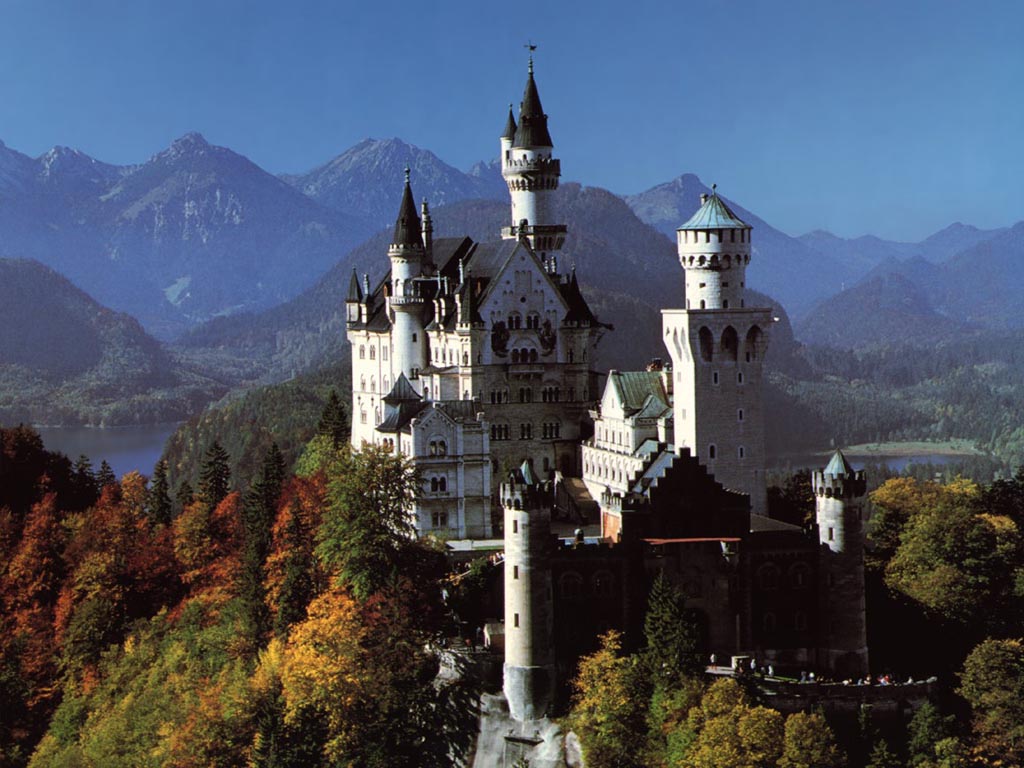

Hohenwerfen Castle, Austria (featured in 'Where Eagles Dare')
 Yemen
YemenSumela, Turkey:
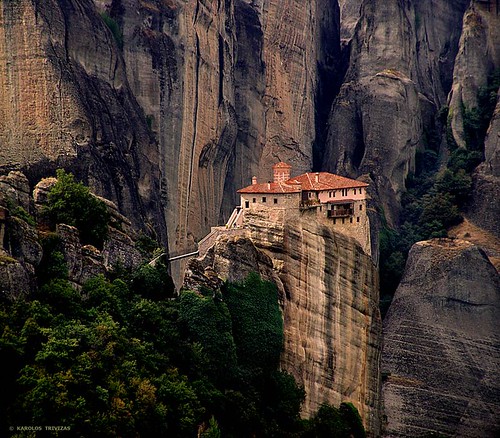
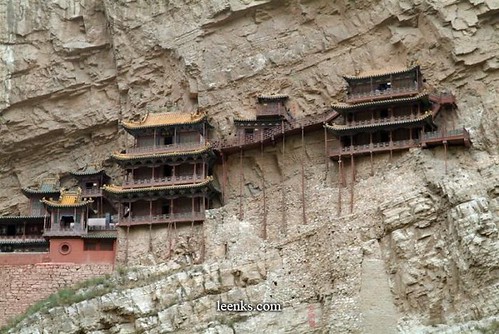
Taktshang, Bhutan
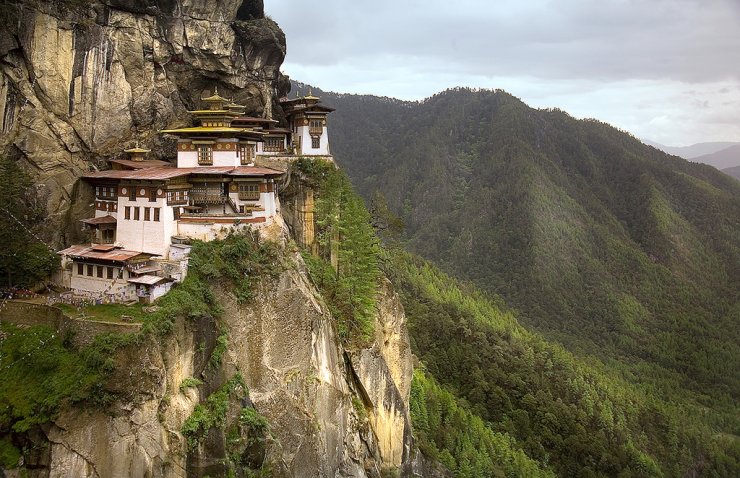 Jungle city of Uxmal.
Jungle city of Uxmal.Pyramid of the Sun.
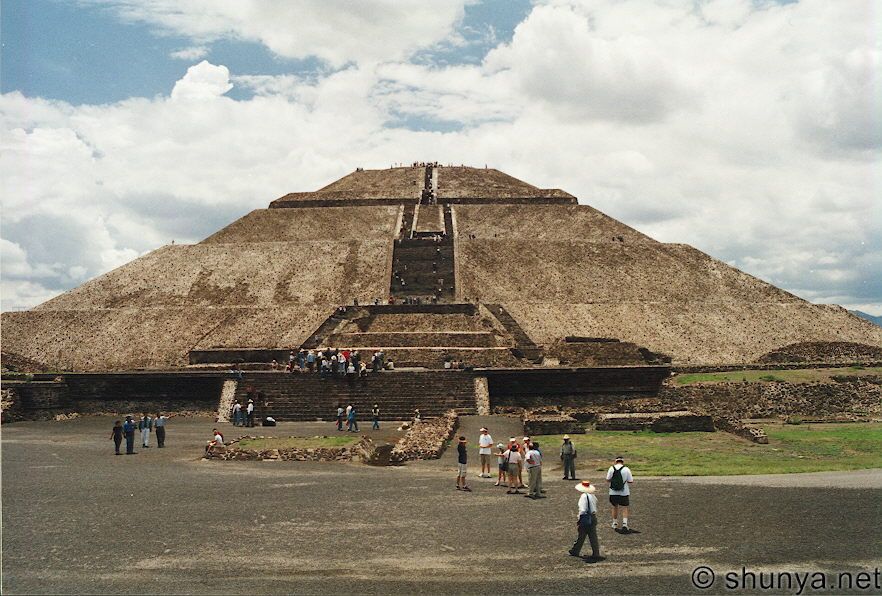
And Moon.
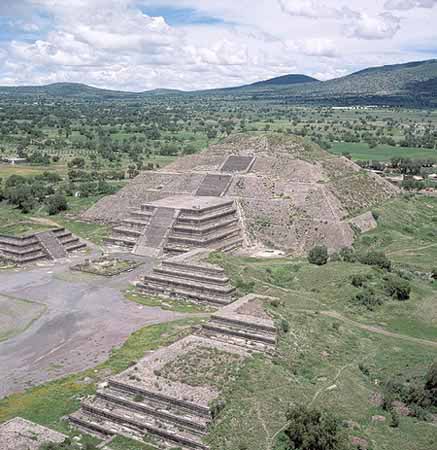
Torre Mayor the tallest scyscraper in Mexico.Hoàng Sơn, Võ Đang, Tam Thanh... lừng danh kim cổ nhờ thiên nhiên tạo tác và những công trình kiến trúc của con người.
1. Hoàng Sơn là dãy núi phía nam tỉnh An Hui, miền Đông Trung Quốc. Từng xuất hiện nhiều trong các bức họa cũng như văn học, Hoàng Sơn có thắng cảnh đẹp tuyệt diệu, là nơi lý tưởng ngắm mặt trời mọc. Du khách có thể dễ dàng tới thăm Di sản thiên nhiên thế giới này bằng đường xe lửa và hàng không từ Thượng Hải, Hàng Châu và Vu Hồ.
2. Núi Vũ Di (tỉnh Phúc Kiến) trải rộng trên diện tích 60 m2, được UNESCO công nhận Di sản văn hóa và thiên nhiên thế giới năm 1999. Đây là nơi có khu bảo tồn đa dạng sinh học lớn nhất vùng đông nam Trung Quốc. Vũ Di là quê hương của nhiều loại trà quý hiếm như Đại Hồng bảo trà và Hồng trà.

Để tới núi Vũ Di, du khách phải đi thuyền trên sông Cửu Long, thăm động Loa văn thiên không có nơi chỉ rộng 30 cm.
3. Núi Tam Thanh nằm cách Ngọc Sơn, tỉnh Giang Tây 80 km về phía bắc, do ba ngọn Ngọc Tỉnh, Ngư Thủy và Vũ Hoa tạo thành.

Nơi đây rộng 2.200 km2, được coi là công viên quốc gia Trung Hoa, với hơn 1.000 loài thực vật và 800 ngoài động vật
4. Núi Thương Nham nổi tiếng vì vừa có núi rừng hùng vĩ, vừa có những công trình kiến trúc nhân tạo mang tính lịch sử. Núi cách thủ phủ Thạch Gia Trang của tỉnh Hà Bắc 50 km về phía tây nam, gần tỉnh Thiểm Tây.
5. Võ Đang chỉ là một ngọn núi nhỏ ở phía tây nam tỉnh Hà Bắc, nhưng lại là trung tâm Đạo giáo Trung Hoa trong nhiều thế kỷ.


Những ngôi miếu của Đạo giáo trên núi Võ Đang.


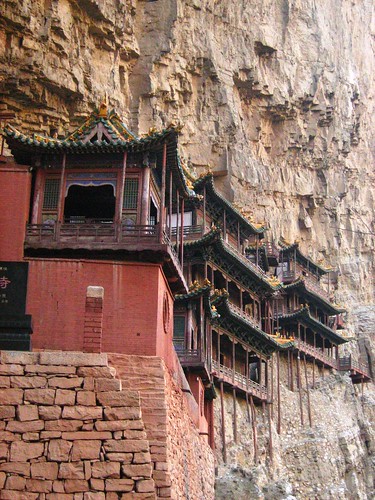















No comments:
Post a Comment